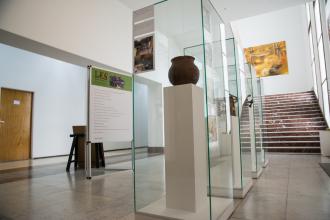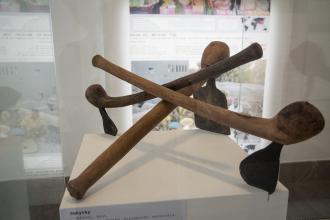How to do it step by step
1st Step:
Choosing the topic
We found an owner of a few artefacts used in an African village where there is no energy for cooking. It seemed a nice idea to exhibit them in public. The owner was an NGO working in the area of development policy, focused on technology transfer, and was therefore very open to the idea and willing to cooperate. The process took us four weeks.
2nd Step:
Gathering information
At the start, we had to gather information on the use of traditional technologies. We did some research, contacted people who were there on the ground, and looked for some photos.
At the same time, we researched the energy situation in so-called developing countries, especially in areas where there is no electricity or any other infrastructure or modern technologies that might be used for cooking.
We have gathered information about the health risks posed by cooking on a coal stove, especially when used without a chimney, as is common in some areas.
3rd Step:
Preparing the exhibition and the texts
After the research was completed, we had several discussions with the architect and the experts on how to make the exhibition as impressive as possible. We decided to follow the format of a seemingly traditional exhibition, so that visitors would think at first that they really were looking at ancient objects and would only discover later that these were items currently used by poor families in kitchens around the world. We also decided to add some explanatory texts and agreed to place them on the side of the vitrines.
4th Step:
The vitrines
The next step was to look for some vitrines. It was difficult to find suitable vitrines at a reasonable cost. We contacted a few institutions without any luck. Finally, we discovered that we could borrow them at a reasonable price from another museum in Prague. Our architect was very helpful in solving these problems. This step took us about four weeks.
5th Step:
Visualizing the installation
The fifth step was to prepare and print the texts and to visualize the exhibition. The preparations and the printing took us two weeks. It did not take too long because Educon has been involved in energy-related topics and energy poverty in so-called developing countries for many years.
6th Step:
Implementation
The implementation in the museum was done by a specialized installation company, which also organized the transfer of the vitrines.






















